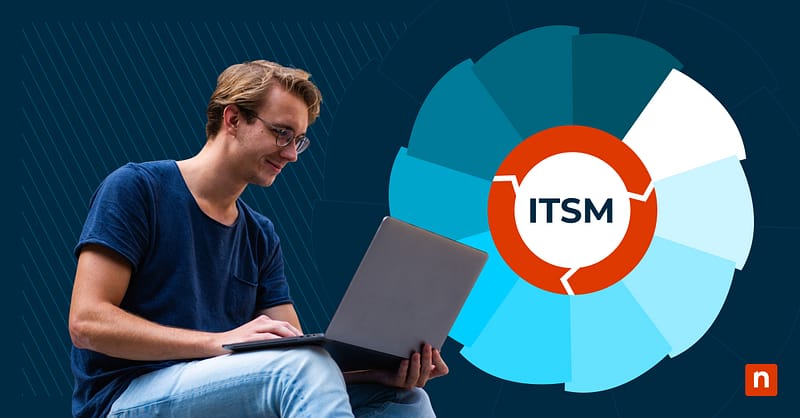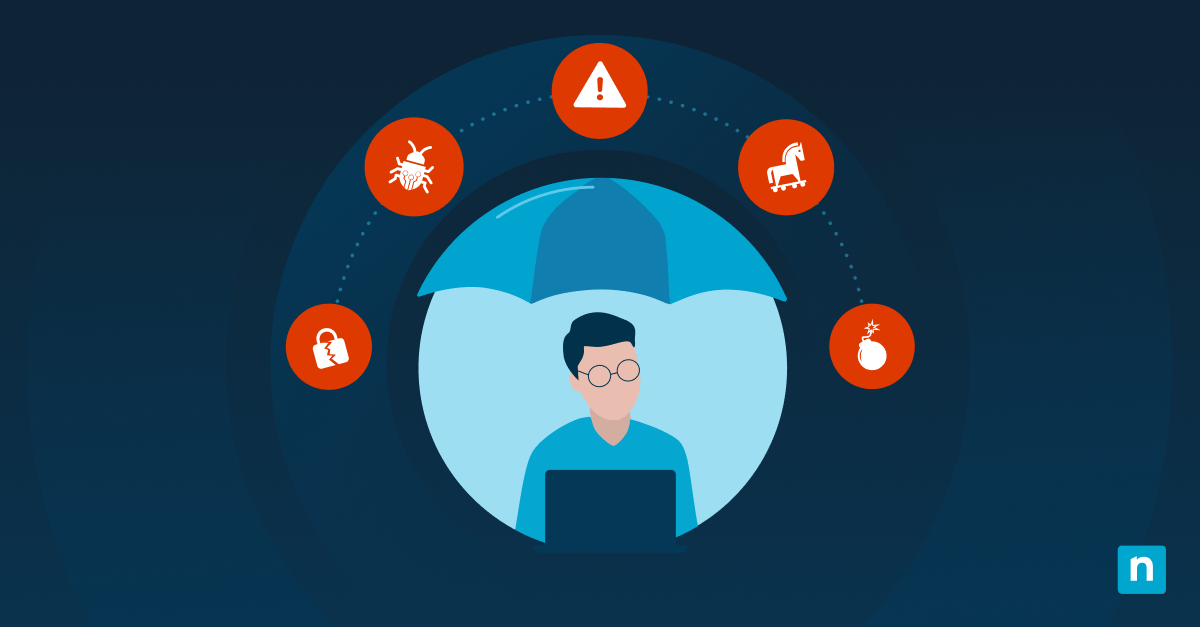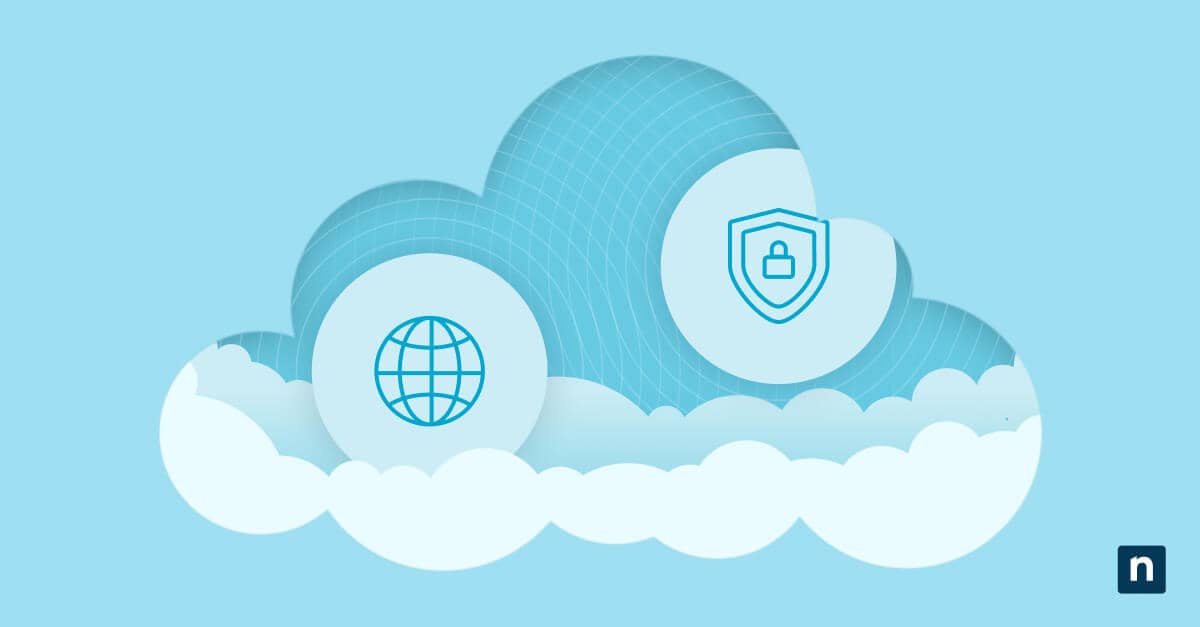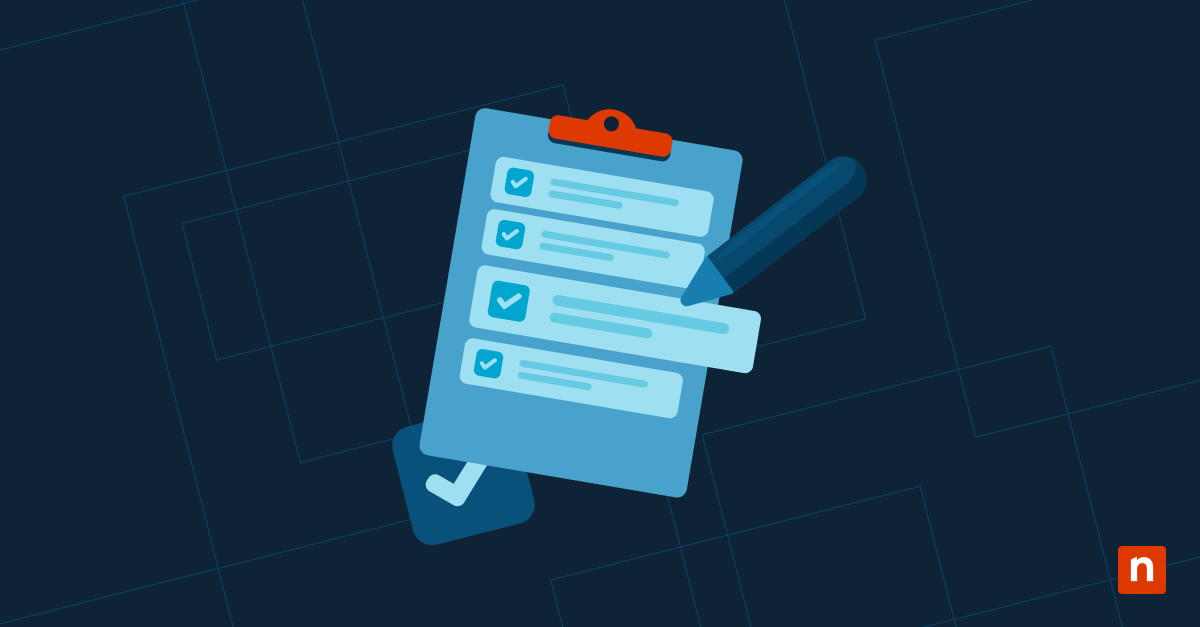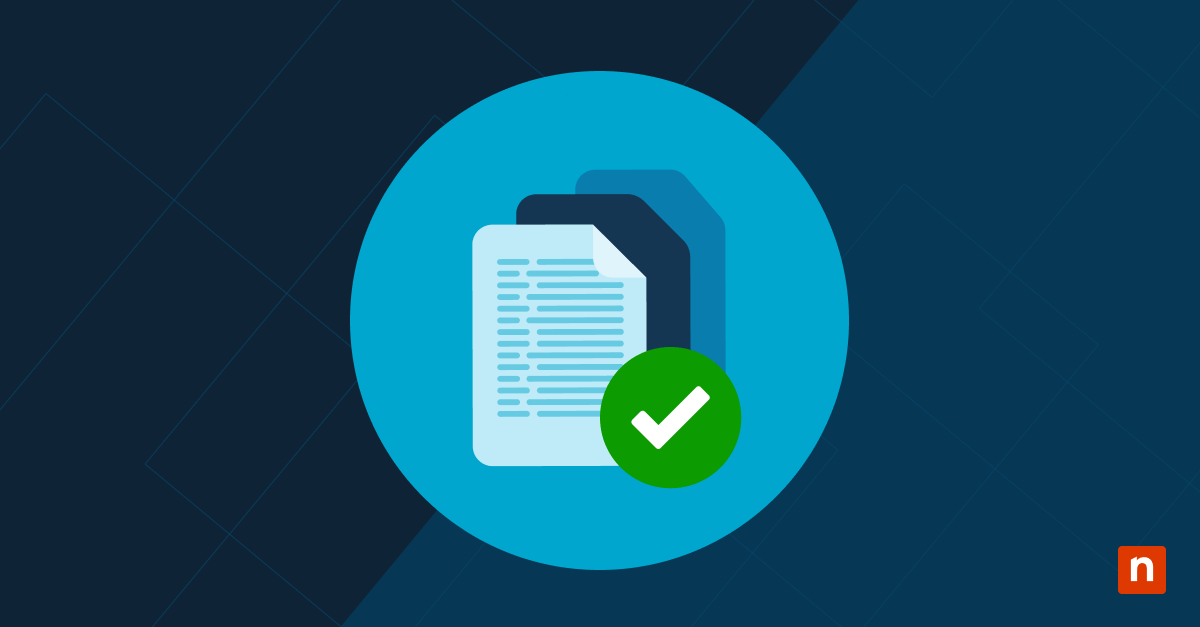Key Points
ITSM Frameworks Explained with Examples
- What It Does: ITSM provides structured guidance for managing and delivering IT services effectively.
- Why It Matters: ITSM helps align IT operations with business goals, improves service quality, and boosts operational efficiency.
- Popular ITSM Frameworks: The most popular ITSM frameworks are ITIL, COBIT, ISO/IEC 20000, MOF, and TOGAF.
- Who It’s For: IT teams, service managers, and organizations aiming to standardize and improve IT service delivery will benefit from a robust ITSM integration.
IT Service Management (ITSM) is an important framework for organizations that provide IT services. This structured approach helps them align their IT services with business needs to deliver value and efficiency.
A self-assessment survey by AXELOS revealed that roughly half of the respondents felt their ITSM capabilities were “great” or “good,” while other organizations conceded that they need some improvements, which can be had through ITSM frameworks.
In this guide, we’ll review what ITSM is and how you can choose the right framework for your organization.
What is ITSM?
IT Service Management encompasses the processes, policies, and procedures used to manage and improve IT services planning, delivery, and support.
The goal of ITSM is to ensure that a business’s IT services meet customers’ needs and are aligned with the overarching organizational goals. Simply put, ITSM is the actual practice of managing IT services to improve their quality, reduce operational costs, and standardize any related processes.
Transform IT workflows and deliver more efficient support.
What is an ITSM framework?
An ITSM framework is a structured and standardized approach to IT service management and delivery. It includes best practices, initiatives, and processes for ITSM and the resources and actions required to implement them within a business.
Below are four key use cases that highlight how ITSM frameworks are applied in real-world scenarios.
Four ITSM framework use cases
ITSM frameworks are used for several specific use cases and areas of ITSM. Here are the 4 most common ITSM framework use cases:
Use case | Description |
| Incident management |
|
| Problem management |
|
| Change management |
|
| Knowledge management |
|
These use cases are typically supported by frameworks like ITIL, COBIT, or ISO/IEC 20000, which guide process design and continual service improvement.
On that note, your ITSM strategy will need reliable data protection software. NinjaOne’s SaaS Backup offers automated, secure backups that ensure service continuity and support compliance across your IT environment.
5 common ITSM framework examples
1. ITIL
- Who it’s for: For medium to large enterprises with structured IT operations.
- Key activations: For standardizing IT service delivery, continual service improvement, and managing incidents.
The Information Technology Infrastructure Library (ITIL) framework contains a group of documents with best practices for ITSM. ITIL processes assist companies in increasing the efficiency of service delivery while reducing the associated management costs. This framework focuses solely on ITSM, and it is the approach that is most widely accepted.
ITIL has seen wide adoption from organizations due to its comprehensive set of best practices for IT service management. This is also due in part to its suitability with organizations of all sizes across different industries. ITIL’s focus on the IT service lifecycle ensures that organizations can effectively plan, design, deliver, operate, and continuously improve their IT services.
The ITIL framework provides direction and best practices for the five stages of the IT service lifecycle:
- Service Strategy – The identification of the IT service’s direction relative to the organization’s objectives.
- Service Design – Laying out the IT service’s design includes planning operational modes, availability management, infrastructure design, and more.
- Service Transition– Delivering and transitioning new or modified IT services into the live environment.
- Service Operation– The consistent management of the IT services after installation to ensure optimal performance.
- Continual Service Improvement – The data gathering, including key IT service metrics for later analysis.
2. COBIT
- Who it’s for: For enterprises needing strong IT governance and compliance.
- Key activations: For aligning IT with business goals and implementing strategies for risk management and audit readiness.
The Control Objectives for Information Technologies (COBIT) framework guides an organization’s IT management principles and IT governance, and it aims to align IT processes with an organization’s business goals. It focuses on the areas of regulatory compliance, information security, and risk management.
The most recent COBIT 19 framework, released in 2018, is based off six core principles:
COBIT is particularly useful for organizations that need to comply with regulations and industry standards. COBIT’s focus on risk management, security, and compliance makes it ideal for organizations in industries such as finance, healthcare, and government.
The most recent COBIT– 19 framework, released in 2018, is based onoff six core principles:
- Meet stakeholder needs – Ensure the IT service’s compliance with the related parties’ requirements. These parties include employees, investors, stakeholders, customers, and regulating bodies.
- Holistic approach – The approach that makes sure all organizational elements benefit from the management of IT governance.
- Dynamic governance system – The assurance that the IT process can adapt to adjustments such as evolving business goals, emerging risks, and imminent improvements.
- Distinct governance from management – Encompasses the distinction between governance (which involves high-level decision-making by leaders) and management (which involves operational tasks executed by managers and teams).
- Tailored to enterprise needs – Ensures that customization of IT governance and management are suited to organizational factors such as size, structure, industry, and strategic goals.
- End-to-end governance system – The integration of IT governance into every part of the organization to guarantee consistency and accountability.
3. MOF
- Who it’s for: Organizations using Microsoft technologies and services.
- Key activations: For managing Microsoft-based IT environments and integration with Microsoft System Center tools.
Microsoft Operations Framework (MOF) is an open-source service management framework and was designed to help guide IT service providers in improving their efficiency and effectiveness. MOF specifies organization and management principles for IT services to optimize the value and reliability of those services. Even though Microsoft is the creator of this framework, MOF is used generally and not exclusively for Microsoft products and environments.
While MOF was initially designed for Microsoft environments, the framework’s principles are suitable for a wide range of organizations. Microsoft Operations Framework taps into a holistic approach to an entire IT lifecycle. It focuses on the consistent improvement of an organization’s ITSM services.
MOF 4.0 talks about the entire IT lifecycle. They break it down into 3 different phases and one layer that applies to all the phases:
- The Plan Phase – This stage refers to the planning of IT service to ensure that it aligns with the organization’s objectives.
- The Deliver Phase – This phase encompasses designing, building, testing, and deployment of the IT service.
- The Operate Phase – This is the stage where continuous management and monitoring of ITSM service are carried out.
- The Manage Layer – This phase encompasses the active oversight function that spans all MOF phases, ensuring service quality, governance, and improvement.
4. ISO/IEC 20000
- Who it’s for: For organizations seeking international certification for ITSM quality.
- Key activations: For demonstrating high-quality IT service standards, bidding for contracts requiring certified IT practices, and general improvements and structuring of IT processes.
The International Organization for Standardization/International Electrotechnical Commission (IOS/IEC) created an international standard for ITSM called the ISO/IEC 20000. This standard serves as a benchmark for IT teams to ensure that their ITSM processes and practices are aligned with business goals and international guidelines.
ISO/IEC 20000 fits industries that want to display their commitment to delivering high-quality IT services. Organizations can enhance several facets of their operations, such as service delivery, cost-effic
ISO/IEC 20000 has ten parts, but parts 1 and 2 are the most important and applicable to ITSM.
Part 1: Service management system requirements – This part entails the core requirements in building, implementing, managing, and improving of Service Management System (SMS). It involves an official rule set that organizations should comply with to get a certification under ITSM standards such as ISO/IEC 20000-1.
Part 2: Guidance on the application of service management systems – This section involves the referential guide and best practices in applying the requirements laid out in Part 1. Part 2 focuses more on the implementation of the IT service principles for efficient operations.
5. TOGAF
- Who it’s for: For enterprises designing and managing IT architecture aligned with business goals.
- Key activations: For enterprise architecture planning, aligning IT infrastructure with business strategy, and managing digital transformation projects.
The Open Group Architecture Framework (TOGAF) is an enterprise architecture framework or methodology that helps increase efficiency by aligning IT goals with overall business goals. It looks at the use and implementation of software and other technology holistically across the company.
Much like the aforementioned frameworks, TOGAF highlights principles for organizations to ensure that the IT strategy they’re implementing aligns with their business goals. However, this framework is more suitable with large organizations with complex IT environments. TOGAF provides a standardized approach to designing, implementing, and governing enterprise architectures, ensuring that IT investments support the organization’s overall objectives.
Each TOGAF principle has these 4 components: name, statement, rationale, and implications. TOGAF contains 21 architectural principles that are divided into the following groups:
- Business principles – These are guidelines that shape business operations to establish a clear link between IT initiatives and business objectives.
- Data principles – These are guidelines on how data should be managed, maintained, and used.
- Application principles – These are directives related to how applications are designed, developed, and integrated.
- Technology principles – These are rules that pertain to the management of technology infrastructure, including hardware, software, and networks.
Benefits of ITSM frameworks
Some of the major benefits of ITSM frameworks are:
Effective ITSM processes
Using an ITSM framework to guide how your organization plans out ITSM results in more standardized and effective ITSM processes. This improves IT service delivery, reduces incidents, and increases customer satisfaction.
NinjaOne integrates ITSM and unified endpoint management to drive efficiency.
Increased accountability
Comparing current IT service delivery, practices, and processes with ITSM frameworks allows IT teams to see what components may be missing and visualize how their ITSM could improve. Additionally, as a company begins to implement changes and improve processes, the ITSM framework provides a reference point to compare against.
Enhanced alignment with business
ITSM frameworks help organizations to align their IT practices, processes, and overall service delivery with overall business goals. It enables companies to bridge gaps and be aligned with their objectives.
Challenges of ITSM frameworks
A few major challenges of ITSM frameworks include:
Complexity
ITSM frameworks are often complex and a bit overwhelming since they contain so many details. Consider hiring someone with framework expertise to assist your organization with the implementation and adaptation of the ITSM framework:
Resources
ITSM frameworks may require a lot of time and resources to implement in an organization. Make a plan beforehand accounting for the tools, technology, and personnel your organization needs for successful ITSM framework implementation and ongoing management.
Integration
The ITSM framework your organization selects must integrate with the existing IT tools, systems, and processes. Create a strategy for integrating the ITSM framework and how it will align with your business.
Improve your IT services with an ITSM framework
No matter which ITSM framework your organization chooses, NinjaOne can help your organization provide better IT services through unifying ITSM management and endpoint management. With seamless integrations and automated time-consuming and repetitive tasks, Ninja’s software enables organizations to support their customers efficiently. Complete visibility into any endpoint also enables technicians to get more context when delivering IT services and taking action to meet service demands.
Ninja offers software for endpoint management, remote access, ticketing, documentation, and more. Watch a demo or sign up for a free trial today and discover the benefits of unified IT management.

